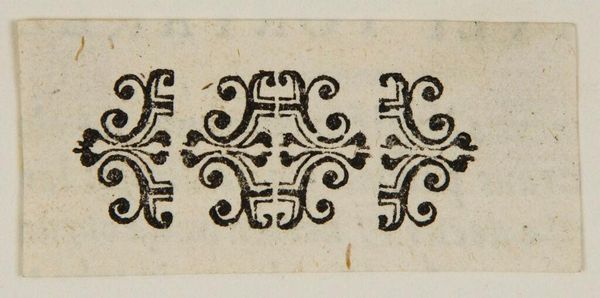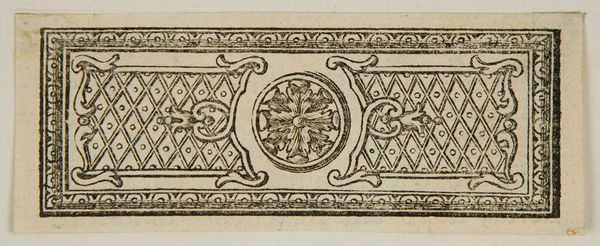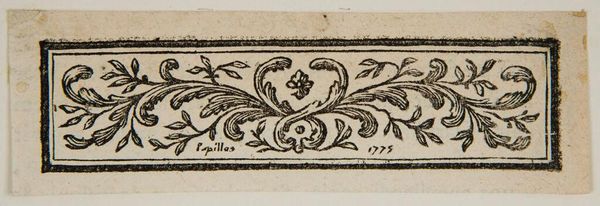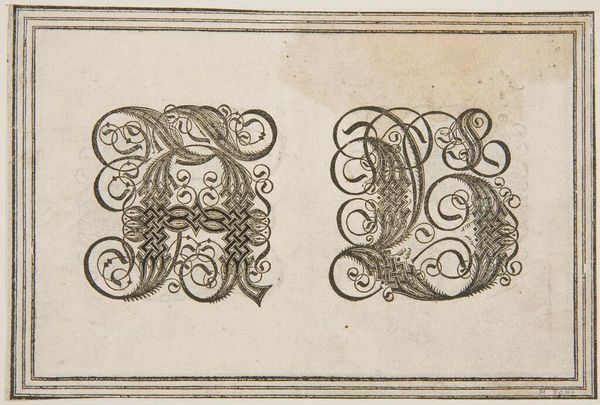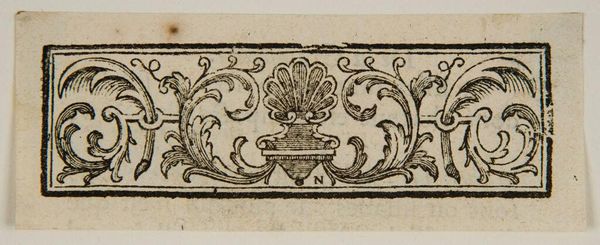
Copyright: CC0 1.0
Curator: Here we have an intriguing piece from the Harvard Art Museums, titled "Head-piece," by an anonymous artist. What strikes you first about it? Editor: The repetition, definitely. The mirrored symmetry creates a powerful rhythm, almost hypnotic. It feels like a fragment, something that belonged to a larger, more imposing artwork. Curator: The repeating motifs certainly draw the eye, don't they? Consider how these intertwined vegetal forms may have functioned symbolically. Perhaps they signify growth, continuity, or even a connection to the natural world. Editor: Interesting. But I'm more drawn to the line work, the stark contrast between the black ink and the paper. It's so precise, almost architectural in its construction. Curator: That precision suggests meticulous planning, a deep understanding of visual language, and perhaps a ritualistic significance. The head-piece format traditionally served a protective, or even a transformative, purpose. Editor: Perhaps. Regardless, the formal balance, the interplay of positive and negative space, create a captivating visual experience that speaks to artistic refinement. Curator: I agree. Ultimately, this small piece whispers of larger meanings, of cultural memory and symbolic encoding, that resonate even today. Editor: Yes, a delicate balance of form and potential function—a fascinating little visual puzzle.
Comments
No comments
Be the first to comment and join the conversation on the ultimate creative platform.
